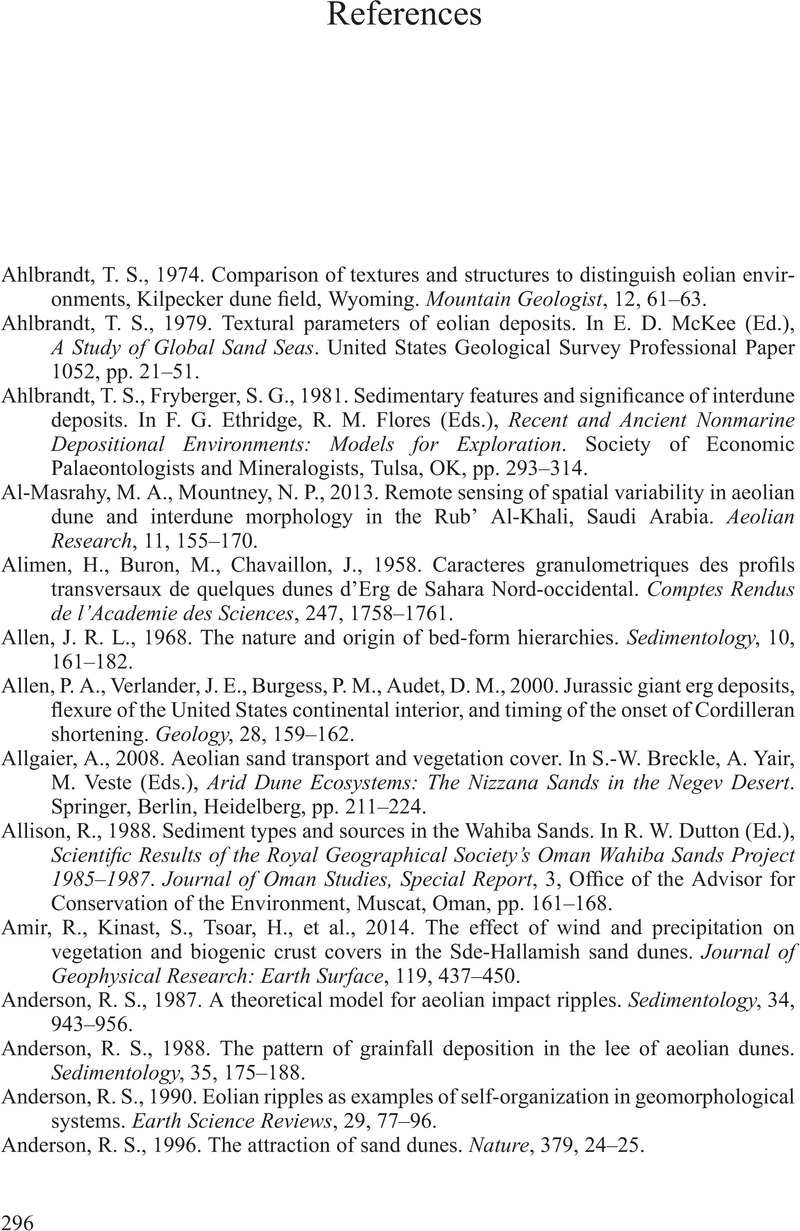Book contents
- Geomorphology of Desert Dunes
- Reviews
- Geomorphology of Desert Dunes
- Copyright page
- Contents
- Preface to the Second Edition
- Acknowledgments
- Part I Introduction and Fundamental Concepts
- Part II Dune Morphology and Sediments
- Part III Dune Processes and Dynamics
- Part IV Boundary Conditions for Dune Formation and Development
- Part V Sand Seas and Dune Fields
- Part VI Dune Systems in Time and Space
- Part VII Conclusions
- References
- Index
- Plate Section (PDF Only)
- References
References
Published online by Cambridge University Press: 03 March 2023
- Geomorphology of Desert Dunes
- Reviews
- Geomorphology of Desert Dunes
- Copyright page
- Contents
- Preface to the Second Edition
- Acknowledgments
- Part I Introduction and Fundamental Concepts
- Part II Dune Morphology and Sediments
- Part III Dune Processes and Dynamics
- Part IV Boundary Conditions for Dune Formation and Development
- Part V Sand Seas and Dune Fields
- Part VI Dune Systems in Time and Space
- Part VII Conclusions
- References
- Index
- Plate Section (PDF Only)
- References
Summary

- Type
- Chapter
- Information
- Geomorphology of Desert Dunes , pp. 296 - 330Publisher: Cambridge University PressPrint publication year: 2023



